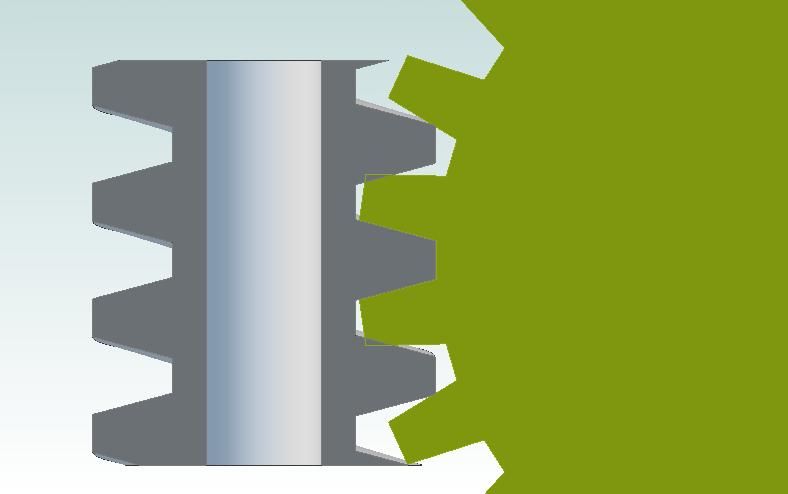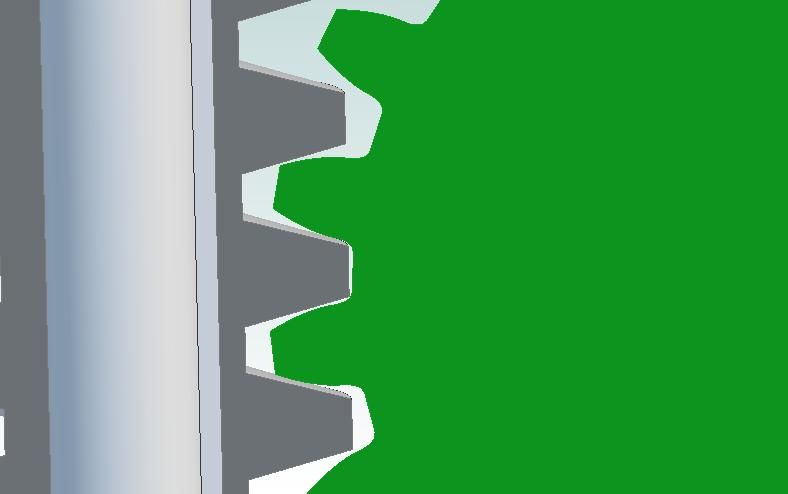This is a very interesting discussion, so many thanks to the contributors so far. I'm impressed with the worm gear drawn by Mark, but as has been suggested I think the tooth shape is incorrect, sorry to be a party pooper.
If we take a very thin slice of the worm wheel and worm we essentially have a rack and spur gear. To mate properly the spur gear will need an involute tooth form appropriate to the DP, pressure angle and number of teeth. That seems simple enough, but the question has been raised about what happens to the tooth form as the worm wheel envelopes the worm. It's a damn good question, and one to which I don't have a proper answer.
First, some experimental evidence. A while ago, when I was thinking of machining the worm wheel on a CNC mill I did exactly as has been suggested. I took an involute tooth form for a 6.283DP, 22 tooth gear with a pressure angle of 15° and extruded it along a helix on the lead angle of the worm. An assembly of the 'prototype worm wheel' with a worm seems to show that the tooth form on the outside of the worm wheel did not mesh properly with the worm. Here I think I agree with Martin that the tooth form is not a simple sweep operation, but I'm open to being proved wrong! In which case I might have wasted my time making the hob. 
So what about the theoretical explanation for the change in tooth form as you move around the worm? I don't know, but how about the following as a starter for ten? We start by stating that the tooth form of the worm wheel at the centre is identical to that of a spur gear of the same DP, number of teeth, and pressure angle. Anybody disagree, and if so why? If we move slightly round the worm, and take a radial out from the centre of the worm, as I see it the effective pitch circle diameter of the mating thin slice of worm wheel gets larger. But the circular pitch, and DP, and the number of teeth stay the same, as the pitch of the worm is a constant. But the PCD of the worm wheel has changed, so something must give. Here is where I'm a bit fuzzy [1]. I think that the tooth form gets thinner, but I currently have no real explanation as to why.
So what do other people think, am I talking sitting bull?
Regards,
Andrew
[1] I might also be fuzzy because I'm on my third glass of red wine in memorium for the Pawnee. That's the aeroplane I'm sitting in, in my avatar. It's just been sold, and is on it's way to South Africa to start a new life as a crop sprayer. I flew it from Cambridge up to East Winch, near King's Lynn, this morning to start that journey. It seemed really strange taking off from Cambridge for the last time, and even stranger walking away from it at East Winch and coming back to Cambridge in a different aeroplane. It's a bit sad, as I really loved flying the Pawnee.
jason udall.















